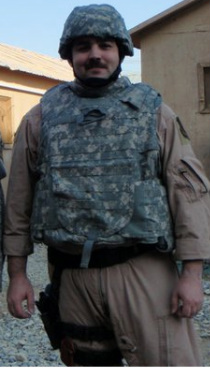|
I drew out a buck deer tag this year for the Stansbury-Oquirrh range in Utah. I've decided I'll run a string of blog posts that show what I do to get ready, my scouting adventures, and of course, the hunt itself. I've applied for some antlerless elk tags as well, so that may make it into the mix. Stay tuned for the first post coming soon!
After my last post on guns, I was asked a series of questions. One of which was how military members/veterans acted around guns vs. civilians. I responded directly to that question, but I think it's a great question, so I wanted to share my opinion with everyone. Keep in mind, these are my opinions and thoughts and aren't meant to be the end-all, be-all.
How do military members act differently around firearms? The major difference you will find, is that all military members have handled a firearm at some point. During basic training, regardless of service, there is a portion where they have qualify with the M-16 rifle. Then, after basic training, the service member is required to maintain proficiency and re-qualify throughout their career. The amount of time between each qualifying period, as well as which weapon(s) depends on a number of factors and could be anywhere from 90 days to three years. Which service the person is in, what job they hold, and how soon they are slated to deploy all play into these factors. Depending on what your their job in the military is, they might qualify in more than the M-16; i.e. Security Forces, Special Forces, etc...will have a whole myriad of weapons that they train on. The training with these groups will be more in-depth than your regular service member. But, remember, every military person will at least have handled a gun in their career. Don't let this fool you though, just because they qualified on the weapon doesn't make them a deadly sniper ready to take on the enemy single-handed. Personality and skill play a factor. Shooting skills still make a difference. Some people are great shots when there isn't a time factor, but will get sloppy if they need to shoot fast, as well as the other way around. Some may qualify, but are still nervous around guns and it shows when they are required to carry one. The bottom line: the differences are the fact they've been exposed to guns and have to shoot them on a scheduled timeline whereas civilians are not subject to the same exposure. |
AuthorC.R. Langille writes horror, fantasy, urban-fantasy, dark fantasy, and is considering stepping into the sci-fi realm. He has a grasp of survival techniques, and has been a table-top gamer for over 16 years. Archives
August 2023
Categories
All
|

 RSS Feed
RSS Feed